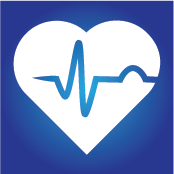Cardiovascular disease is more prevalent within the SCI community than in the general population.The reason for this is because of the extensive amount of bed rest following traumatic spinal cord injury, which results in a low level of physical activity and cardiovascular fitness. Continue reading
SCInfo Blog

Finding a biomarker for acute SCI
| 0 commentsWhat is a biomarker? A biomarker is any measurable indicator in the body that represents a certain condition. Having a biomarker is helpful in assessing an illness, and sometimes in selecting the most effective treatment for the illness.
Continue reading
Wheelchair angles and heart health
| 1 commentCan the angle of your wheelchair affect your heart health? Have you ever wondered whether different body positions affect the way your heart pumps blood to the rest of your body? Continue reading
How bowel, bladder, sexual dysfunction can affect health
| 1 commentWhat is bowel, bladder and sexual dysfunction? Persons with a spinal cord injury (SCI) can experience changes to their bladder, bowel, and sexual function secondary to the spinal cord damage. Problems can occur due to a lack of voluntary control over urination and defecation, possibly leading to complications like urinary tract infections. Continue reading
How is neuropathic pain studied?
| 3 commentsWhat is neuropathic pain? Pain typically occurs when damage to the body creates a signal that is relayed to the brain by the nervous system. Neuropathic pain, on the other hand, is pain resulting from damage directly to the nervous system. Continue reading
Exercise heart rate and physical activity after SCI
| 2 commentsWhy study physical activity and participation? High-level SCI can cause damage to nerves that regulate the cardiovascular system, making it hard for affected individuals to regulate their heart rate and blood pressure. As a consequence, blood pressure can be very low in people with high-level SCI, and their heart rates are often slow and fail to increase as they should during exercise. Continue reading
Arterial stiffness after SCI and interventions
| 1 commentWhat is “central arterial stiffness,” and why is it important? Arterial stiffness is the consequence of many modifiable and non-modifiable factors that include age, gender, physical activity levels, family history, diet, body composition, and blood pressure level. An increase in arterial stiffness is directly correlated with cardiovascular (CV) disease and the hardening and loss of elasticity of the arteries in the heart and brain. Continue reading
Do caster size and weight distribution affect wheelchair rolling resistance?
| 1 commentDoes size matter? As you are probably aware, propelling a wheelchair is not a very efficient use of your energy. You have probably heard that the type of tires you use and the importance of inflating them regularly makes a big difference to how much energy you use, but have you thought about the size of your front wheels, called casters? Continue reading
A phone-monitored upper limb home exercise program for post-stroke individuals
| 0 commentsPost stroke recovery– The ideal rehabilitation program: Up to 75% of stroke survivors have upper limb impairments that make everyday tasks like grasping a cup or utensil difficult. Many of these individuals become reluctant to use their affected limb in daily activities (called “learned non-use”). This can be detrimental to their long-term health, since reduced arm use has been associated with consequences such as decreased strength and bone density. Continue reading
The costs of autonomic dysreflexia for people with SCI
| 0 commentsWhat is Autonomic Dysreflexia (AD)? AD is a life-threatening condition that can develop as a common secondary condition for people with spinal cord injuries. It is triggered by an overstimulation of the autonomic nervous system—the system responsible for all unconscious bodily functions such as the heart control and breathing. Continue reading



